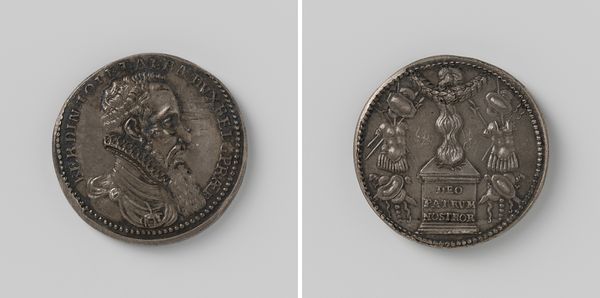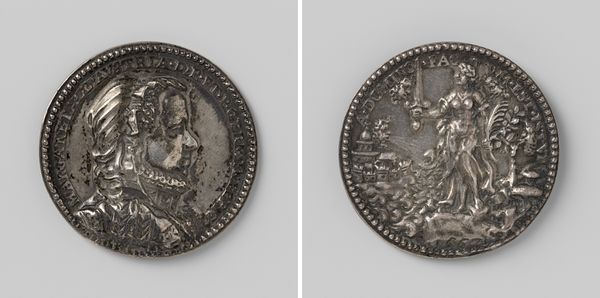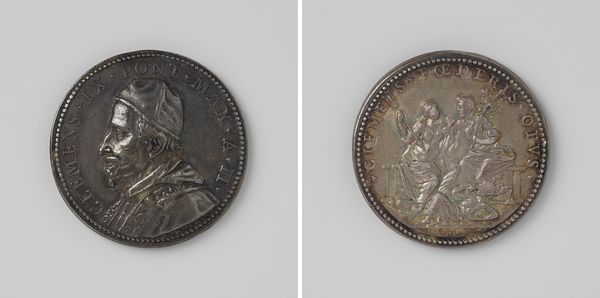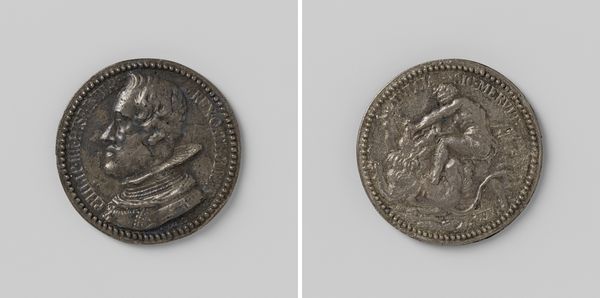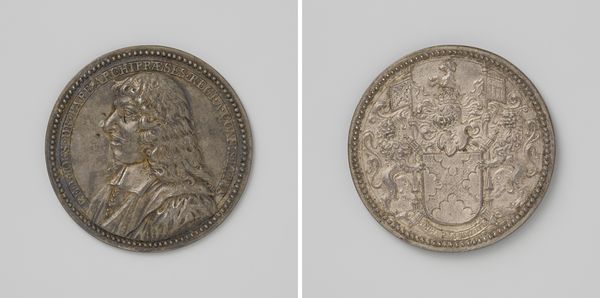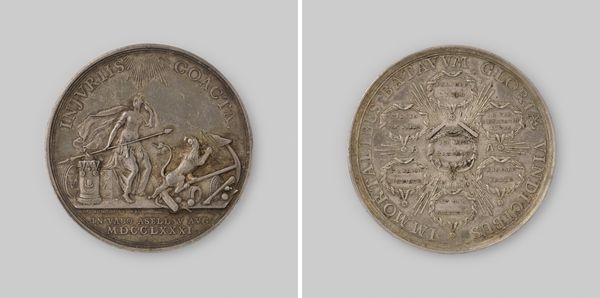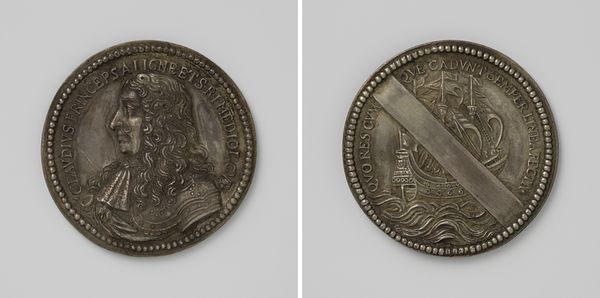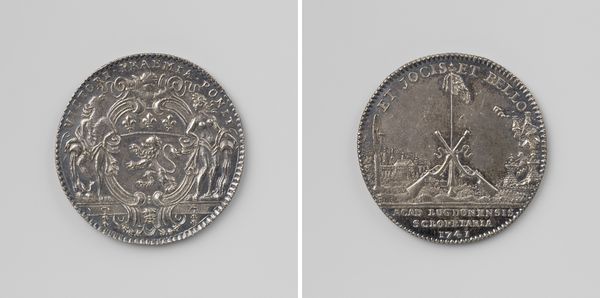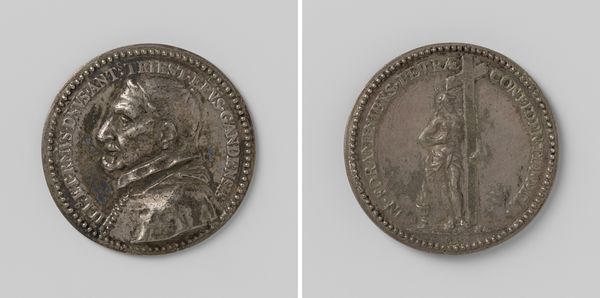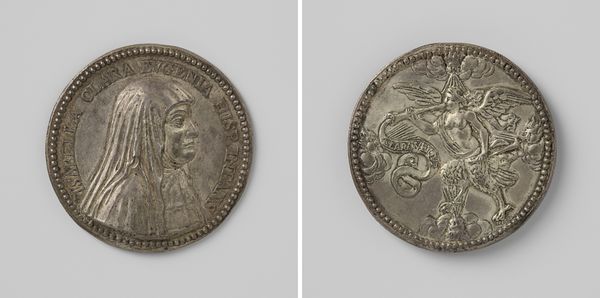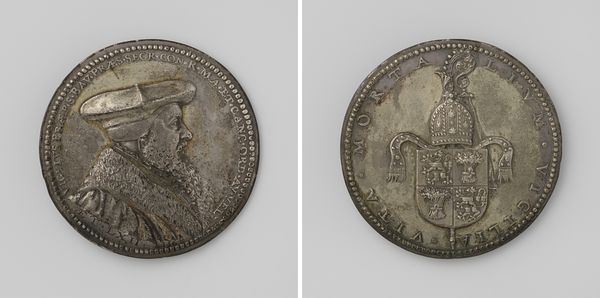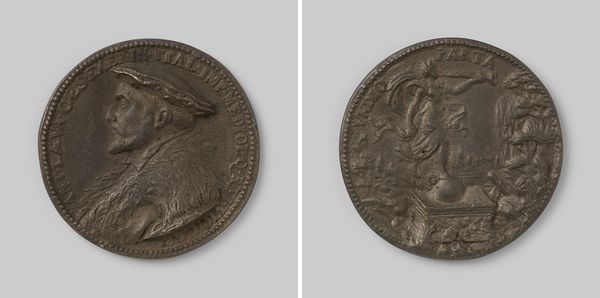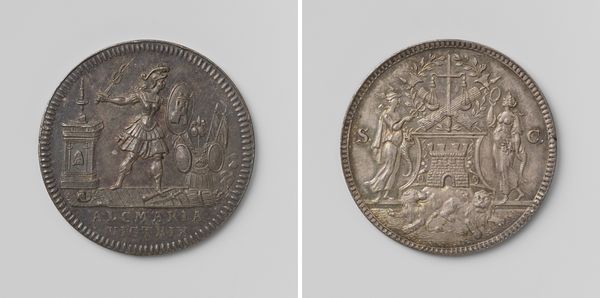
Dimensions: diameter 4 cm, weight 31.69 gr
Copyright: Rijks Museum: Open Domain
Editor: We're looking at "The Capture of Tunis by Don Juan of Austria," a metal engraving from 1572. The starkness of the metal gives it a really dramatic feel, almost like a coin from a fable. How do we even begin to unpack the narrative here? Curator: Well, consider this artwork not just as a historical record but as a carefully constructed piece of propaganda. This medal celebrates a military victory, but more profoundly, it reinforces a particular European, Christian identity against a perceived "Other." How does the portrayal of Don Juan himself, for example, contribute to this? Editor: I see, the laurel wreath almost makes him look like a Roman emperor, lending an air of classical heroism. But who are the figures he is triumphing over in the second panel? Curator: That's where it gets interesting, and frankly, problematic. The subjugated figures in the water represent Tunis, embodying a defeated "Islamic" identity. Notice the ways in which they are dehumanized, literally drowning in the narrative of European triumph. This medal served to solidify a very specific, and exclusionary, political and religious power structure. How might this be similar to other instances of historical depictions of victory? Editor: So, it’s not just about documenting history but shaping it, using visual language to create a clear “us versus them” narrative. It’s chilling to see how art can be weaponized in this way. Curator: Exactly. By critically examining this piece, we can see how historical events were – and continue to be – selectively framed to justify power imbalances and erase marginalized voices. Editor: I’ll definitely think about Renaissance art differently now. It’s about more than just aesthetics or technique; it reflects complex power dynamics. Curator: Precisely, and that awareness is crucial in our engagement with art today.
Comments
No comments
Be the first to comment and join the conversation on the ultimate creative platform.
